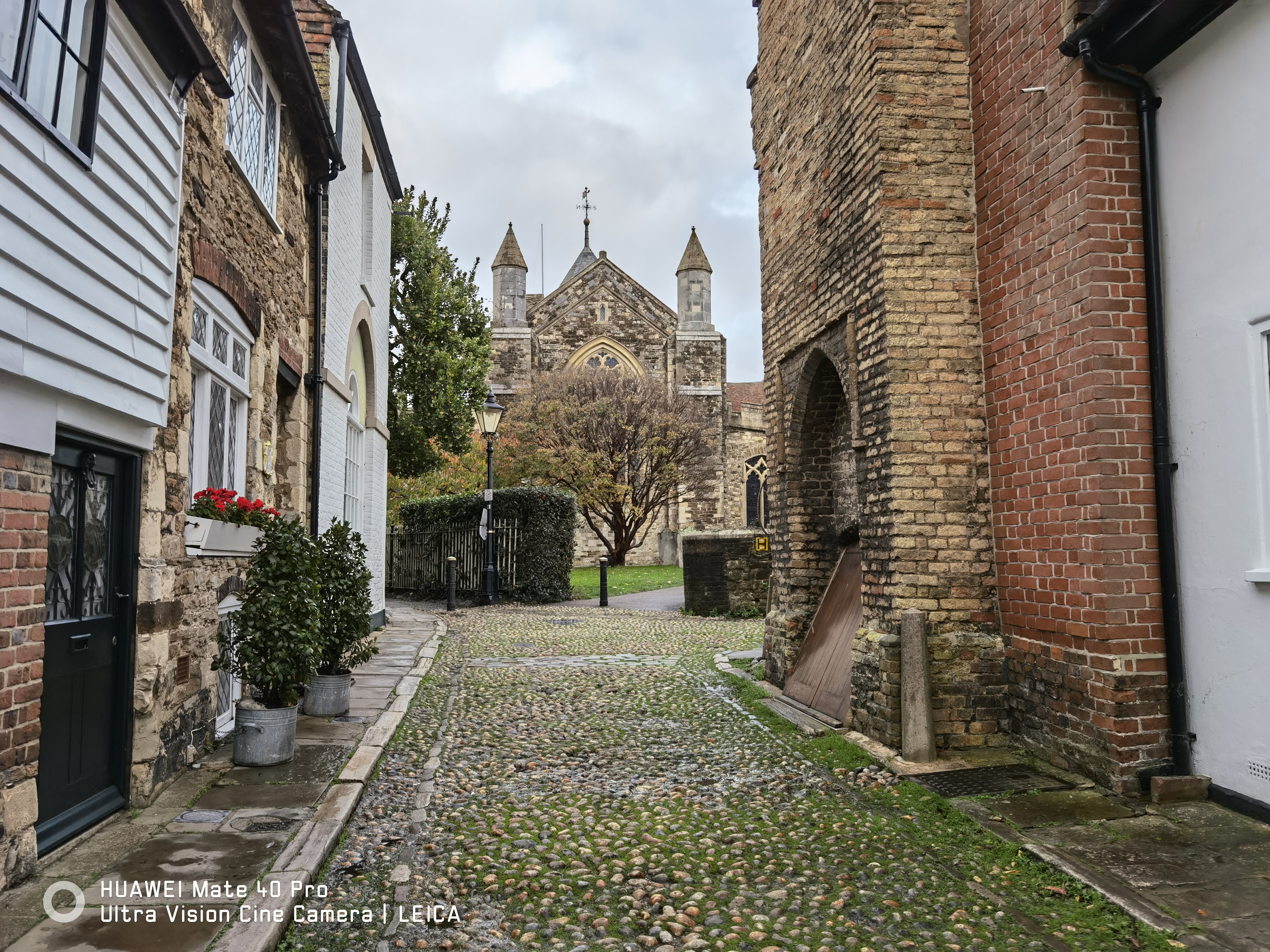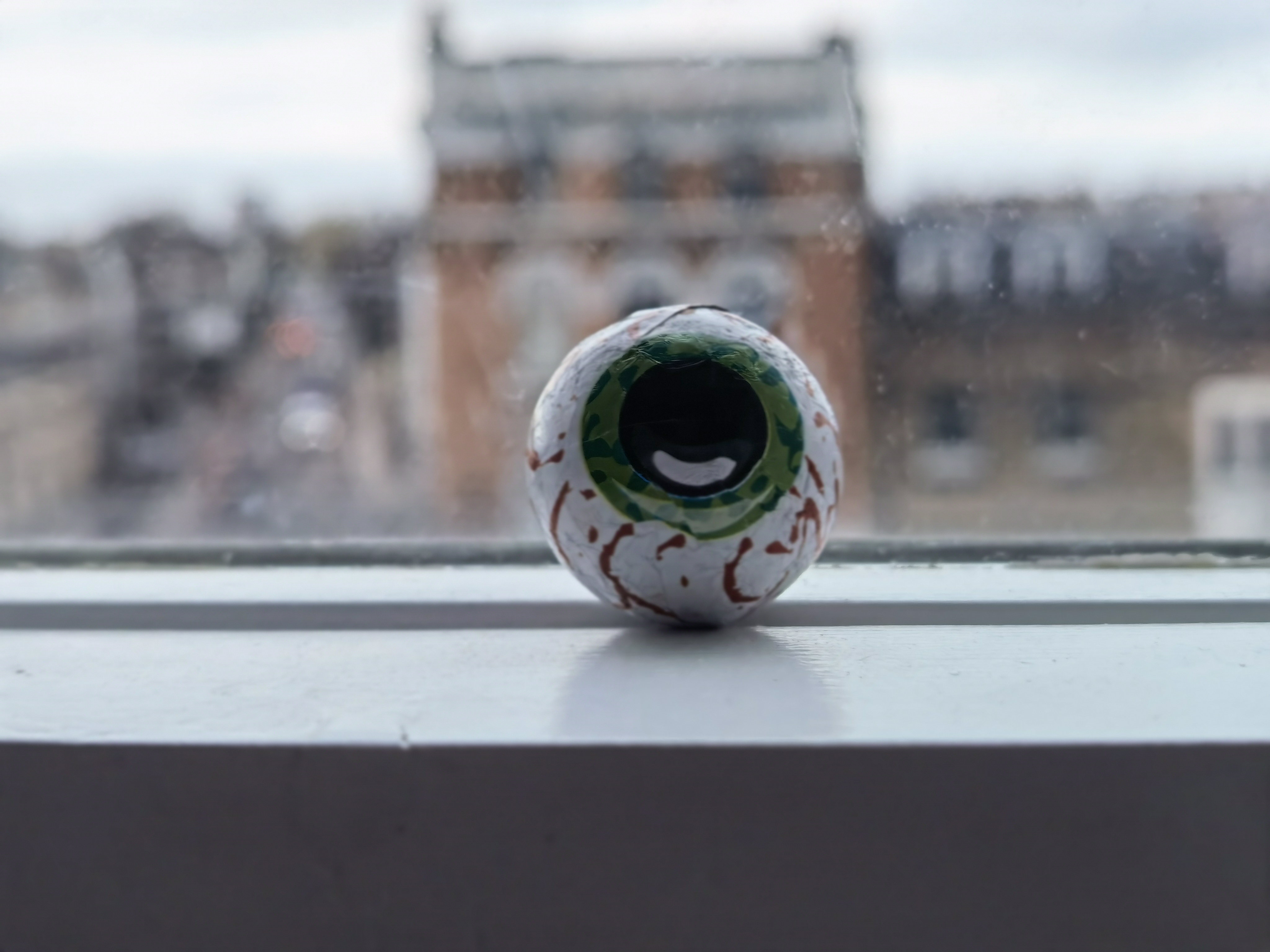Huawei Mate 40 Pro camera and video modes: we’ve tested them out for you to see
Is this the best camera phone?

The Huawei Mate 40 Pro is a pretty amazing camera phone, but it’s hard to do justice to just how great it is to use in a standard TechRadar review. This is the reason we’ve dedicated a second article to the smartphone’s snapper.
Perhaps the most enjoyable features of the Huawei Mate 40 Pro to test are its camera modes, which help you play around to develop your photography skills. Sure, you could simply point the camera at your subject and press the button, but engage one of the selection of modes on offer, and you'll be able to take better pictures.
So, we've tested the camera modes available on the Huawei Mate 40 Pro and reveal the results below, so you can see for yourself just how great the Huawei Mate 40 Pro is to use (well, for photography at least; there are some major issues with the phone elsewhere, which you can find out about in our full review).
Note that there may be modes we haven't yet tested, since not all the camera features are listed in the app. For example, we only discovered the Moon Photography mode after seeing the rock in the sky, and recalling the mode as a selling point of the Huawei P30. So, for now, here are the ones we could find.
- These are the best camera phones
Photography modes
Standard mode

The Standard photo mode utilizes the Huawei Mate 40 Pro’s 50-megapixel main camera. The sensor is RYYB (red, yellow, yellow, blue), not RGB (red, green, blue) as it is in most phone cameras. This means it takes in more light, making photos look vibrant and bright.
The picture we’ve chosen to show here isn’t one of our best snaps taken with the Huawei Mate 40 Pro, which is the reason it isn't included in the main Mate 40 Pro review. Nevertheless, thanks to the power of the camera, it still looks pretty good.
Since the camera ‘sees’ light well, the bright parts of the cobbles and brickwork stand out. The greater contrast against the dark areas means textures become more obvious.
Sign up for breaking news, reviews, opinion, top tech deals, and more.
Aperture

In photography, different apertures offer various depths of field; in the Huawei Mate 40 Pro, with Aperture mode you get manual control over this, but not to the level of Pro mode.
We didn't shoot in this mode frequently, since the default ‘Photo’ mode of the camera is smart enough to automatically choose the best aperture for any individual shot. However, those who like manual control over all the elements may find this mode useful.
Night


Night modes are frequently used as a testing ground for camera phones, and the Huawei Mate 40 Pro is no exception. The handset takes great low-light shots in Night mode, although when you take a dark photo in Standard photo mode, a degree of AI optimization is applied to stop shots looking poor.
Check out the images below, of a rather dark London alley. In the picture taken in Night mode, the darker edges of the image are lightened, making the textures and details of the wall more apparent.
We actually prefer the picture without Night mode engaged because the contrast from the street lamp is more apparent, making the image appear moodier. That’s just our preference, though, and if there were no street lights, then shots taken in Night mode would certainly trump standard shots.
Portrait

Most smartphones have a Portrait mode, so you might know a thing or two about this. However, the Huawei Mate 40 Pro goes a little further than the standard ‘blur the background’ approach of the majority of smartphones.
Portrait images shot with the Mate 40 Pro don’t feature as blurred a background as you might expect. Instead, your subject stands out from the background as a result of some tweaking of the settings by the phone.
Look at the Portrait shot here. It has a gentle background blur, but the far background is slightly desaturated, as is the sky. In addition, the coat, scarf and jeans have highlights accentuated to make the figure clearer.
Monochrome

Monochrome does what it says on the tin, letting you take pictures in a black-and-white style. However, the end result isn't achieved by simply applying a monochrome filter on a picture you’ve already taken.
Sometimes, adding a black-and-white filter to a color picture can give sub-par results – the shadows and highlights don't appear as expected. In addition, colors in the background can seem too similar, creating an effective mise-en-scene. Actually taking the picture in Monochrome mode allows you to see how the shot will end up, so you can arrange angles, lighting and the subject accordingly.
You can use the monochrome overlay for standard pictures as well as for Portrait, Pro and Aperture shots; the snap you see below is in Standard mode. Since we were able to see the preview in black-and-white, we could contrast the darker subject against the lighter background, and position each to avoid the picture looking too busy.
Light painting

Light Painting is a fun mode. You set up the phone to record for a period of time, a little like a timelapse video, but any moving lights are tracked as shapes. You can use this to ‘draw’ in light, create a moving photo of the light from car headlights, to capture star trails over the course of a night and much more.
Not exactly a mode for the ‘serious photographers’ out there, but it's pretty entertaining, especially if you can enlist someone else to draw the light shapes for you.
We did find Light Painting mode tricky to use; you have to hold the handset still for quite some time, with any slips ruining the final picture. Nevertheless, if you're successful, the results are attractive – although we expect that busier or brighter intersections would create more picturesque results.
Moon

We felt a sense of child-like glee when we stumbled across Moon mode. This mode was actually a selling point of the Huawei P30, but the company doesn’t make much of a fuss about it now. The results are something a smartphone camera really shouldn’t be able to pull off, yet the Mate 40 Pro does so anyway.
Zoom in to the moon, and for a moment the orb will be overexposed and you’ll just see a white glow – but then the phone balances the light, and suddenly details will start to become apparent.
Check out the picture we took. You can make out the Mare Serenitatis and Mare Tranquillitatis to the top-right, with the Mare Imbrium to the left and Oceanus Procellarum next to it. Sure, the photo is a little hazy, and you can’t quite make out all the textures of the lunar body (craters aren’t really visible, for example) – but all that seems forgivable when you remember that the photo was taken on a chocolate-bar-sized personal smartphone.
Videography modes
Standard
We’re going to include a ‘standard’ video we shot as a point of comparison for the following modes. The Video Recording mode doesn’t use the main camera – it actually uses the 20-megapixel ultra-wide snapper.
Perhaps because this sensor is RGB not RYYB, captured video doesn't benefit from the color and brightness boost of photos. However, considering we took the sample shot on a gloomy day, it isn't half bad.
Slow motion
Huawei phones have typically come with impressive slow-motion capabilities. Most smartphone camera slow-mo records at 960fps – that’s 32x slower than the regular footage you’d record on using your device. However, Huawei phones can record at 3840fps, which is four times slower than average. This is variable, though.
This super-slow footage captures super-fast motion that even the human eye wouldn’t catch, allowing you to view it back. It’s a fun mode to play around with, and the fact that it makes everything look extra dramatic is welcome.
The problem with slow-mo footage captured with the Huawei Mate 40 Pro, which is also an issue on most phones, is that the resulting video is very low resolution. As such, beyond showing it to friends, there isn't much else for which you can use it; we certainly wouldn't recommend it for professional use.
Timelapse
Timelapse is the opposite of slow motion – you set up the phone to shoot over a long period of time, and this video is then turned into a short one upon playback. You can use it to show the changing of weather over a day, you working on a certain task (such as building a Lego set), or to watch food cooking, for example.
Unlike the majority of smartphones, the Huawei Mate 40 Pro has a variable capture speed, so depending on the action you're trying to capture, you can choose the rate at which the phone takes a picture: frequently, or rarely. An Automatic mode is available, if you don’t know which speed to select.
We recorded some pretty good timelapses on the Huawei Mate 40 Pro – the one below shows cars traveling at a junction. The video looks a tiny bit bumpy, and the lights are overblown, but this rather adds to the artistic style of cars traveling through the night. Note, too, that the Mate 40 Pro performed commendably when recording this video: the feature didn’t drain too much of the phone's power, nor did the handset get too hot.
Story Creator
Story Creator is an interesting video mode: it lets you record a few several-seconds-long short videos, and then edits them into a ‘montage-style’ video for you. This isn’t the first phone to include such a mode – Xiaomi phones have ‘Vlog’ mode. Nevertheless, it’s a useful mode for people who like to record their lives on their phones, or perhaps for mobile journalists, too.
The video below shows that we messed up here: when taking the separate clips, we rotated the phone to get the best angle – or, so we could change which hand was in use for the action. But although the phone UI rotates when you flip the phone, apparently the resulting footage stays upside-down.
Sure, we could have re-taken the footage, but that wouldn't have provided an easy opportunity to highlight a shortcoming with the function. Other than this issue, however, the mode was easy to use and the footage looks okay – if you flip your screen. You can select from a few presets that change the number of clips and time of each. We opted for a more dynamic one; but for slow-pans of landscapes, for example, you could choose a slower one.

Tom Bedford joined TechRadar in early 2019 as a staff writer, and left the team as deputy phones editor in late 2022 to work for entertainment site (and TR sister-site) What To Watch. He continues to contribute on a freelance basis for several sections including phones, audio and fitness.